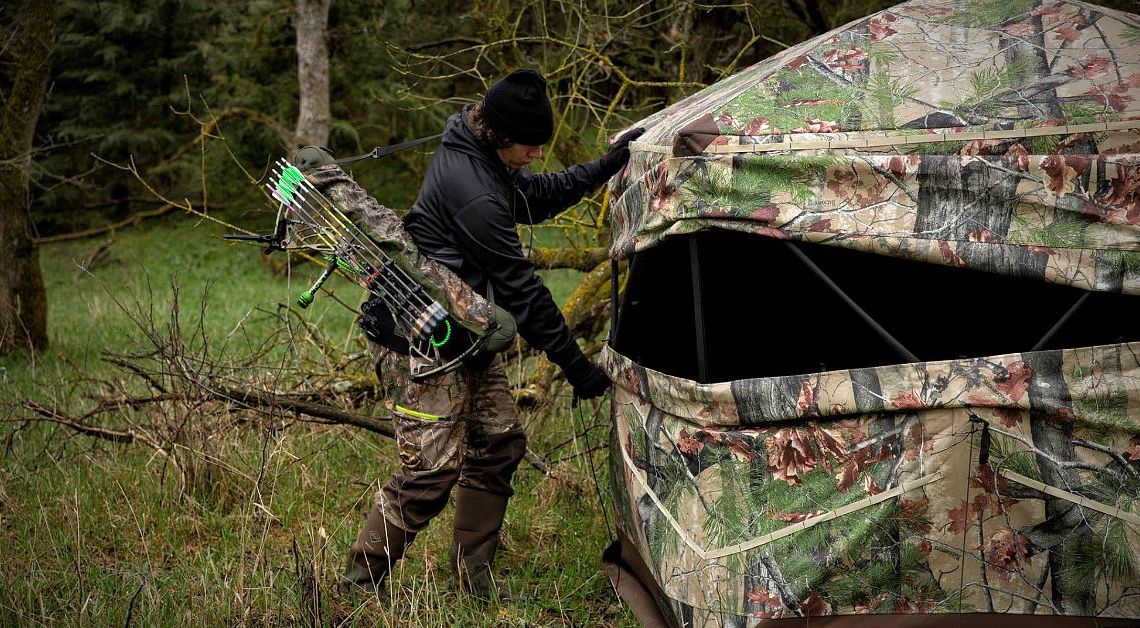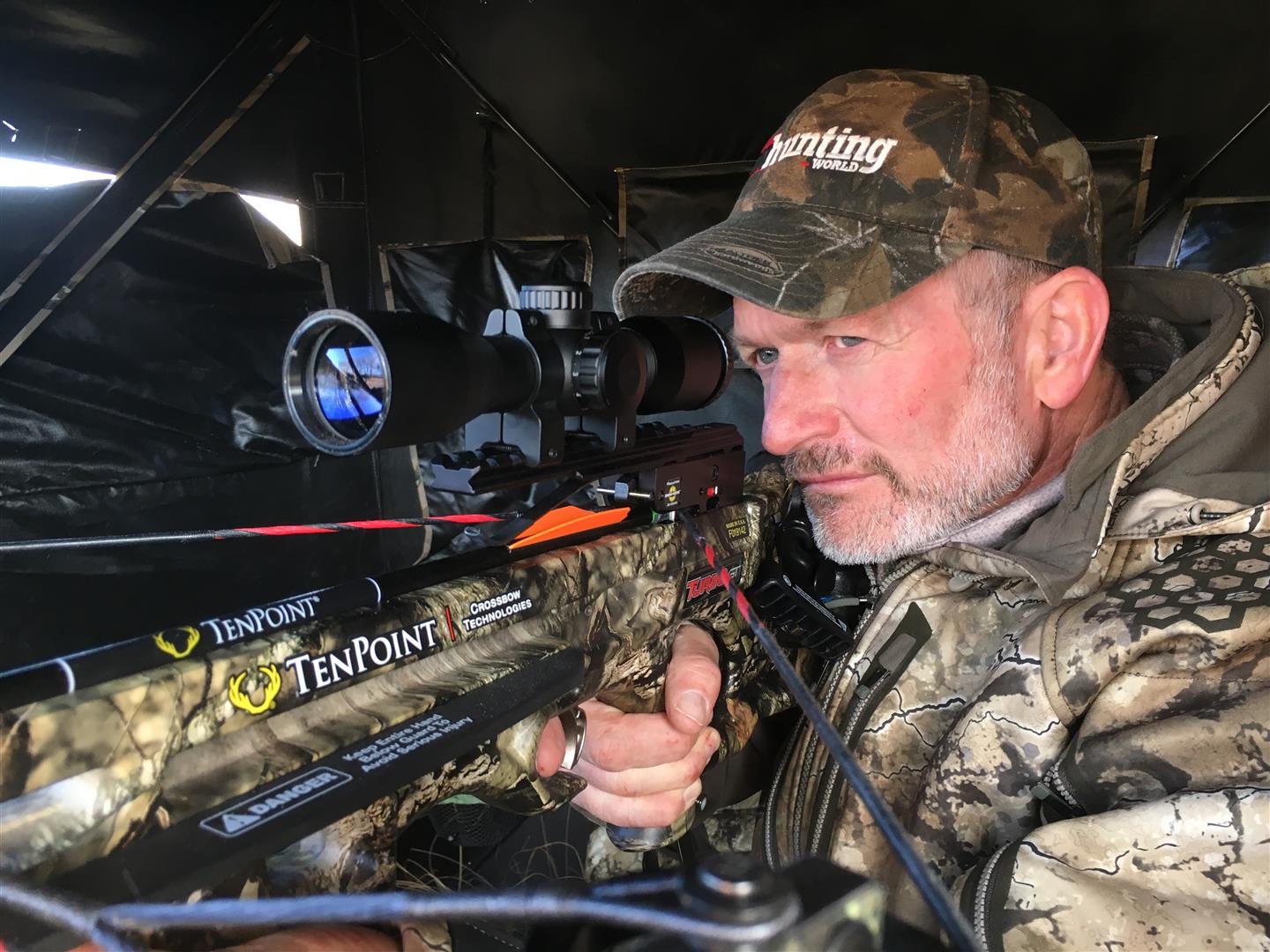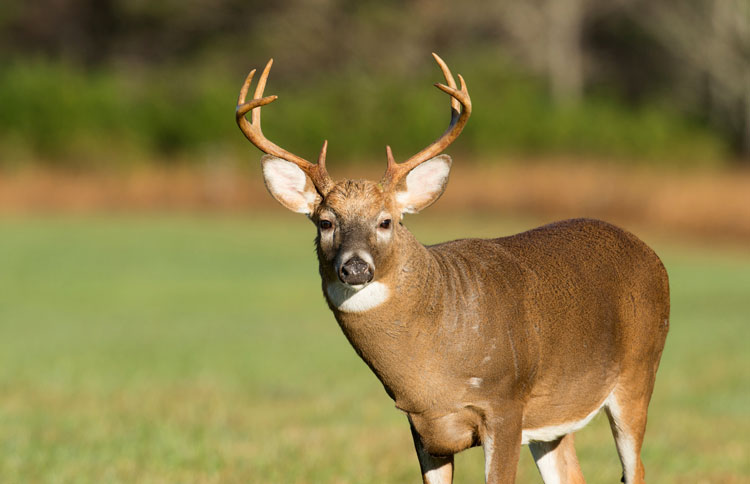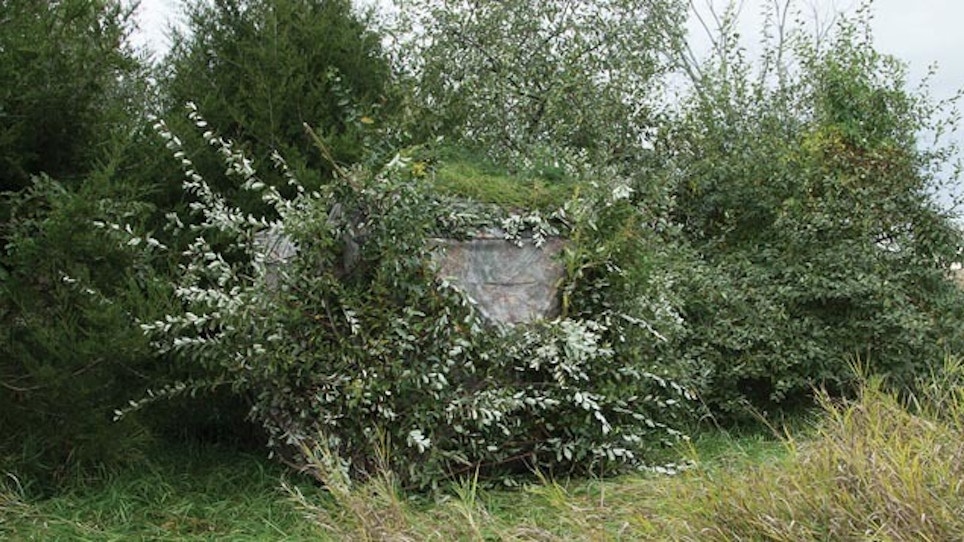Ground blinds are a great way to set up for whitetail deer, especially in areas where you can’t put up a treestand or elevated blind. They are quick and portable and provide great cover to hide hunters and help block human scent. They are equally effective for rifle, bow or crossbow hunters, with specific designs to accommodate a wide variety of equipment. They hide hunter movement, provide protection from the elements and allow you to access extra gear without spooking game.
Knowing where to set up blinds is an art and — when done correctly — it puts the hunter at a distinct advantage. Choosing a blind location along a travel corridor or feeding area is a main factor, but blending the blind into the surroundings and setting up for prevailing winds can be even more important. Setting up a new object in the deer’s woods can be compared to having something new in your neighborhood.
Like anything with hunting, the more attention you pay to the little details, the more successful you’ll be in the end. Here are six essential blind-hunting tactics and techniques to help you get eye to eye with a big buck this fall.
Related: Primos Hunting Blind With Surround View
1. Pre-Season Scouting
Knowing where to set up your blind is likely the biggest factor in scoring on a big buck. A mature deer simply doesn’t travel in the open, and the game trails snaking through dense cover are always a better option for locating trophy antlers. You could just throw the blind up on the edge of a field, but putting in a little scouting time will allow a hunter to pinpoint travel corridors between feeding and bedding areas and make informed decisions on blind placement. You can then set up where the big mature deer hide out.
If you don’t have time to walk the trails on a regular basis, a couple of trail cameras can do the work for you. The bottom line is, the most important hours spent hunting are the ones spent figuring out where the deer live and what they do on a daily basis.
Related: 10 Best Ground Blinds for 2018
Don’t make the mistake of setting up on what you experienced and observed in previous years. Conditions change, and with an increased presence of predators, crop rotations, drought and other weather and seasonal events, the best guiding factors are the most recent ones you can get.
2. Set Up Well in Advance

You can check out Grand View Outdoors' 10 Best Ground Blinds for 2018, by click on the image.
Whitetails are always hard to deceive, and setting up a blind long before you plan to hunt from it will maximize its effectiveness. Deer will avoid new objects in their area until they are proven to be mundane. Setting up your blind a couple of weeks before deer season allows the new smells and outlines to become part of the deer’s familiar territory.
When you can’t set up in advance, be sure to place the blind where it isn’t obvious. Forget the edge of the field and get it inside the tree line for better concealment. If you’ve done any homework about the herd’s habits, you can set the blind back in the trees or other natural cover, which shouldn’t hinder you in any way as you plan for the deer to walk right in front of you.
3. Camouflage It
Don’t just settle for a blind set up on a fence line or ridge top or in a strip of trees. Blend it into the environment with brush, grass, cattails or whatever natural vegetation is handy. Most quality blinds have straps or cords to attach natural camouflage and help your blind disappear. Fresh-cut tree limbs and bunches of grass or straw also help veil the smell of your blind. Some blinds come with carbon odor suppressors, but there are still smells from manufacturing, packaging and travel that take time to dissipate. The best way to make it scent free is to leave it set up outdoors in the elements. Over time it becomes part of the habitat in both sight and smell.
If you can’t get it out into the field, set it up in your backyard so it can air out and not smell like the hold of a cargo ship. It will work better if it gets rained on a few times and the sun has a chance to heat the fabric. The more time outside, the better.
4. Play the Wind and Sun
No matter how hard you try to cover or hide human scent, a deer can still detect it. Seasoned hunters know to stage upwind of their quarry whenever possible to circumvent a whitetail’s incredible nose.
Spraying scent-eliminating sprays on new blinds, chairs and gear can help immensely. Ozone machines can also be used to better hide a hunter at the molecular level.
A whitetail’s eyes are as sharp as their nose, and they never miss movement, bright objects or shining faces. When you locate an active game trail being used by a big buck, try to find a spot to set up your blind downwind with the sun behind you. If the early-morning sun is shining on your face, you will glow like a light bulb when looking out of the windows. This might mean setting up different blinds for hunting the morning and evening, depending on prevailing winds and sunrise or sunset locations.
Dress in dark clothing to take advantage of the dark cave you are creating. Wear a facemask or put on some camo makeup to gain yet another advantage.

In Nebraska, Bob Robb employed crossbows and hunted from ground blinds. Tip: Don’t make the mistake of setting up on what you experienced and observed in previous years. Conditions change. Photo: Bob Robb
5. Don’t Pigeonhole Yourself
One of the biggest mistakes hunters make when using ground blinds is pigeonholing themselves by setting up in a spot with limited visibility and a single shooting lane. By the time you actually see a deer, you never have time to react, field judge, and get your rifle or bow into position before they are gone.
Make sure to find an area where you will see deer traveling up and down a trail, through a slough bottom or along the bottom of a valley. It allows you to set up, identify potential shooting lanes and ensure you have time to look over the antlers before you pull the trigger.
Feeding areas can be great locations to set up, especially during the rut. A good food plot or agricultural field with high-protein feed is sure to attract a host of does and bucks at any time. Having the ladies come to feed on a regular basis is a sure way to find the biggest buck in your hunting area. Simply put in time during the prime rutting season and the does will inevitably draw the big boys from cover.
Pinch points or lanes that funnel deer into small areas are honeyholes. One of my favorite spots to hunt is a small strip of land between two lakes. The short trees and shrubs in the area make it impossible to hunt from an elevated position, and the best option is a ground blind. I have one set up at each end of the 125-yard peninsula so I can hunt it morning and afternoon depending on the wind and sun conditions.
6. Don’t Let the Deer Pattern You

If a deer ever confirms you as a human at the blind, it will look for you every time it goes through the area. Deer will even change their travel movements to use the wind or cover to avoid the blind. Photo: iStock
By using every advantage possible, you are sure to have deer moving comfortably in front of you throughout the hunting season. Be smart and never let a deer see you in the blind, which includes going to and leaving the structure. If a deer ever confirms you as a human at the blind, it will look for you every time it goes through the area. Deer will even change their travel movements to use the wind or cover to avoid the blind. Deer have their preferred patterns, but they will change them in a heartbeat to avoid hunters. Make sure you pattern the deer and don’t have them pattern you. It might mean arriving at the blind long before the sun comes up or sitting well after the sun goes down, but don’t even think of coming or going until you are sure the deer won’t see, smell or hear you.
Once you start looking for the little details, you’ll find you start seeing more mature deer throughout the season. Stacking every advantage in your court will pay off in total inches of antler in the future.






